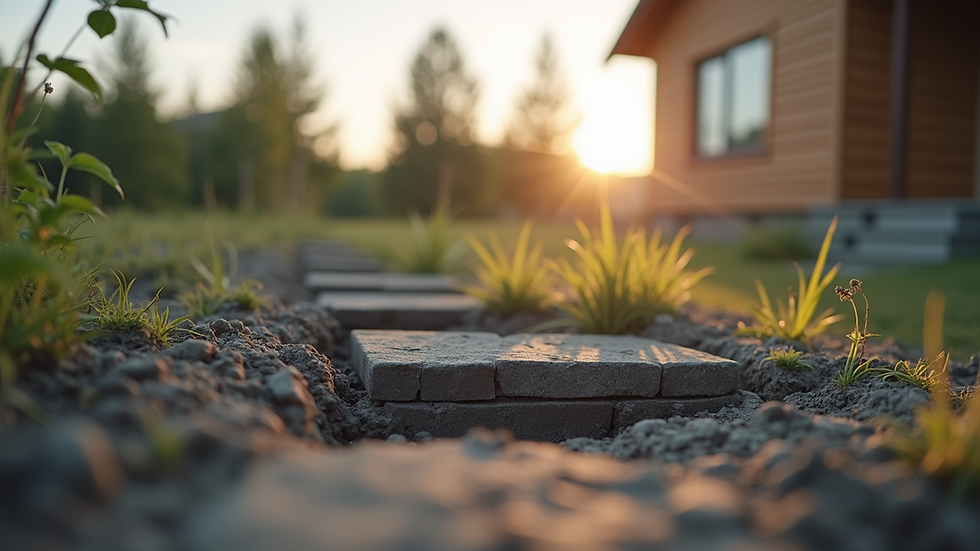What To Expect During a Standard Home Inspection
- info3282413
- Jun 6
- 4 min read
When buying a home, one of the most important steps in the process is the home inspection. This service provides you with essential information about the property you are considering. Understanding what to expect during a standard home inspection can help you make informed decisions and avoid potential pitfalls.
The Importance of a Home Inspection
A home inspection is a comprehensive evaluation of a property's condition. It typically lasts between two to four hours and covers key aspects of the house. A home inspector examines various systems and structures, including the roof, plumbing, electrical systems, and HVAC. This in-depth assessment helps you identify any issues that may need addressing and plays a crucial role in negotiations.
Many buyers often feel overwhelmed by the inspection process. However, it is important to remember that a home inspection is your opportunity to learn as much as possible about your potential future home. According to the American Society of Home Inspectors, nearly 85% of home buyers hire a home inspector to thoroughly evaluate the property before the purchase.

What Happens During a Home Inspection
During a standard home inspection, the home inspector will follow a systematized process to assess various components of the home. The inspection generally starts on the exterior of the property.
Exterior Assessment
The inspector will first look at the outside features of the house. Key areas they will evaluate include:
Foundation: Any cracks or deterioration could indicate serious issues.
Roofing: They will check for missing shingles, leaks, and the overall condition.
Gutters and Drainage: Proper drainage is vital to prevent water from pooling.
After the exterior is assessed, the inspection moves inside the home.

Interior Assessment
Once inside, the home inspector will typically evaluate:
Basement and Crawl Spaces: Look for dampness, mold, or structural issues.
Walls, Ceilings, and Floors: Inspect for signs of cracking, water damage, or uneven floors.
Windows and Doors: Check for functionality and any air leaks.
Additionally, they will inspect the major systems within the house, such as plumbing, electrical, and heating and cooling.
Key Systems to Review
Plumbing: The inspector will look for leaks, corrosion, and the quality of pipes. Any issues in the plumbing system can lead to significant repair costs down the line.
Electrical System: They will assess the circuit breakers, wiring, and overall safety of the electrical system to ensure it meets current codes.
Heating and Cooling Systems: Check the age, functionality, and maintenance history of heating and cooling units. The inspector will also look for signs of wear.
Summary of Findings
After reviewing both the interior and exterior of the home, the inspector compiles their findings into a detailed report. This report typically includes photographs, descriptions of identified issues, and recommendations for repairs or further evaluations by specialists.

Understanding the Report
Once the home inspection report is received, it can feel overwhelming. However, focusing on key aspects can help you interpret its findings effectively:
Prioritize Major Issues: Look for any problems that could significantly impact your budget or safety. Examples include significant roof damage, outdated electrical systems, or plumbing issues.
Minor Repairs: Many issues may be cosmetic or easily fixed. These could include painting, caulking, or replacing fixtures.
Follow-Up Recommendations: The inspector may suggest further evaluations by specialists for certain areas, such as HVAC systems or roofing. It’s wise to heed these recommendations, as unaddressed issues could escalate.
The Role of Negotiation
Using the home inspection report, you are better equipped to negotiate the price of the home. If serious issues arise during the inspection, you may choose to:
Request Repairs: Ask the seller to address significant problems before closing.
Re-negotiate the Price: Utilize the findings to negotiate a lower sale price that reflects the costs of necessary repairs.
Walk Away: If the issues are too daunting or costly, it may be best to walk away from the deal.
Preparing for a Home Inspection
To make the most of your home inspection experience, both buyers and sellers can prepare:
For Buyers:
Be Present: While the inspection is taking place, attend to learn directly from the inspector. This provides an opportunity to ask questions and gain insight.
Provide Access: Ensure the inspector has access to all areas of the home, including the attic, basement, and all rooms.
For Sellers:
Make It Easy: Clear paths for the inspector and ensure all utilities are turned on. This facilitates a thorough inspection.
Prepare for Questions: Be ready to provide information about any previous repairs or improvements made to the home.
Final Thoughts About Home Inspections
Navigating a home inspection may seem daunting, but it can ultimately empower you as a buyer. Understanding what to expect significantly enhances your ability to make informed decisions and fosters confidence in your investment. A qualified home inspector can provide invaluable insights into the condition of a home, helping you avoid surprises down the road.
Invest your time in understanding the home inspection process. The effort pays off, ensuring your new home is a safe and sound investment for you and your family. Whether using the findings for negotiation or identifying potential maintenance issues, knowledge gained during a home inspection is invaluable in the home buying journey.



Comments